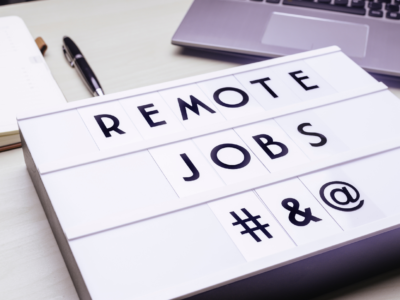Hybrid working models are here to stay, and so too are hybrid meetings. But former meeting norms and practices are no longer valid. The Harvard Business Review has published a video clip to help you optimise the effectiveness of hybrid meetings. Here are the highlights:
– In the camera-on-or-off debate, the important thing is for everyone to adopt the same approach. If only a few people appear on-screen, it creates an uncomfortable dynamic. Visible parties feel more exposed as others can see their reactions but they can’t see theirs. And those who are off-camera don’t participate so actively. If some people are going to have to dial in, then everyone should so that all participants have the same experience and opportunity to speak.
– State clearly on the meeting invite whether it’s going to be an on- or off-screen affair.
– When making the call on cameras, consider the content and objectives of your meeting. If discussing something sensitive or personal, activate cameras. Facial cues are vital for understanding people’s reactions and emotions. Team bonding meetings require cameras to be on because you want to replicate the equivalent in-person experience as much as possible. For all other types of meetings, the author recommends a blanket screens-off policy to give everyone a break from visibility.
– Self-image is really important so don’t match your upper body business wear to your pyjama bottoms! Take the time to get dressed as if this were an in-person meeting, to ensure that you’re in the right frame of mind.
– It’s important to avoid creating a tier system, whereby on-site colleagues are tier one, and virtual workers are tier two. When it comes to Q&A time, it’s best practice to defer to virtual participants first to compensate for the fact that they’re not there. For the same reason, treat the camera as another person, addressing it as much as the rest of the actual room. Otherwise, virtual participants end up with a view of everyone’s backs.
– Get into the mindset that if an element of your meeting doesn’t work for even one of the participants, then you can’t have it. Since virtual participants can’t see what’s being written on physical whiteboards, use virtual ones instead. If it’s a working lunch, send a courier with lunch out to remote workers.
– For further tips on optimising hybrid meetings, please read ViewSonic‘s helpful article on the subject.
It turns out that many things can be done to ensure that all meeting participants, wherever they’re located, have a similar experience. This is key to running effective, efficient hybrid meetings.
ABL, your team of trusted recruitment experts, wishes you the best as we all continue to adapt to new working norms and practices. If you’d like any help on the recruitment side of the challenge, please get in touch. We’ve been helping companies of all sizes to fill their vacancies with talented, qualified individuals for over 30 years now. Just tell us what you need and let us take care of everything else. Quickly. Effectively. And for the long-haul.










